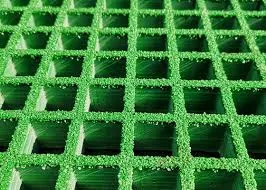
-
 Afrikaans
Afrikaans -
 Albanian
Albanian -
 Amharic
Amharic -
 Arabic
Arabic -
 Armenian
Armenian -
 Azerbaijani
Azerbaijani -
 Basque
Basque -
 Belarusian
Belarusian -
 Bengali
Bengali -
 Bosnian
Bosnian -
 Bulgarian
Bulgarian -
 Catalan
Catalan -
 Cebuano
Cebuano -
 China
China -
 China (Taiwan)
China (Taiwan) -
 Corsican
Corsican -
 Croatian
Croatian -
 Czech
Czech -
 Danish
Danish -
 Dutch
Dutch -
 English
English -
 Esperanto
Esperanto -
 Estonian
Estonian -
 Finnish
Finnish -
 French
French -
 Frisian
Frisian -
 Galician
Galician -
 Georgian
Georgian -
 German
German -
 Greek
Greek -
 Gujarati
Gujarati -
 Haitian Creole
Haitian Creole -
 hausa
hausa -
 hawaiian
hawaiian -
 Hebrew
Hebrew -
 Hindi
Hindi -
 Miao
Miao -
 Hungarian
Hungarian -
 Icelandic
Icelandic -
 igbo
igbo -
 Indonesian
Indonesian -
 irish
irish -
 Italian
Italian -
 Japanese
Japanese -
 Javanese
Javanese -
 Kannada
Kannada -
 kazakh
kazakh -
 Khmer
Khmer -
 Rwandese
Rwandese -
 Korean
Korean -
 Kurdish
Kurdish -
 Kyrgyz
Kyrgyz -
 Lao
Lao -
 Latin
Latin -
 Latvian
Latvian -
 Lithuanian
Lithuanian -
 Luxembourgish
Luxembourgish -
 Macedonian
Macedonian -
 Malgashi
Malgashi -
 Malay
Malay -
 Malayalam
Malayalam -
 Maltese
Maltese -
 Maori
Maori -
 Marathi
Marathi -
 Mongolian
Mongolian -
 Myanmar
Myanmar -
 Nepali
Nepali -
 Norwegian
Norwegian -
 Norwegian
Norwegian -
 Occitan
Occitan -
 Pashto
Pashto -
 Persian
Persian -
 Polish
Polish -
 Portuguese
Portuguese -
 Punjabi
Punjabi -
 Romanian
Romanian -
 Russian
Russian -
 Samoan
Samoan -
 Scottish Gaelic
Scottish Gaelic -
 Serbian
Serbian -
 Sesotho
Sesotho -
 Shona
Shona -
 Sindhi
Sindhi -
 Sinhala
Sinhala -
 Slovak
Slovak -
 Slovenian
Slovenian -
 Somali
Somali -
 Spanish
Spanish -
 Sundanese
Sundanese -
 Swahili
Swahili -
 Swedish
Swedish -
 Tagalog
Tagalog -
 Tajik
Tajik -
 Tamil
Tamil -
 Tatar
Tatar -
 Telugu
Telugu -
 Thai
Thai -
 Turkish
Turkish -
 Turkmen
Turkmen -
 Ukrainian
Ukrainian -
 Urdu
Urdu -
 Uighur
Uighur -
 Uzbek
Uzbek -
 Vietnamese
Vietnamese -
 Welsh
Welsh -
 Bantu
Bantu -
 Yiddish
Yiddish -
 Yoruba
Yoruba -
 Zulu
Zulu
FRP Solutions for Thermal and Nuclear Power Generation Applications
FRP Products for Thermal and Nuclear Power Innovations and Applications
Fiber-reinforced polymer (FRP) products have become increasingly pivotal in the thermal and nuclear power sectors due to their exceptional properties, including corrosion resistance, high strength-to-weight ratio, and thermal stability. These characteristics make FRPs particularly well-suited for various applications in power generation facilities, offering both performance improvements and cost savings.
Understanding FRP Materials
FRPs are composites made of a polymer matrix reinforced with fibers, typically glass, carbon, or aramid. This combination results in materials that are lightweight and durable, which is particularly advantageous for power plants dealing with heavy equipment and harsh operating environments. In thermal and nuclear power plants, the fundamental challenge is to ensure structural integrity and reliability while minimizing maintenance costs. FRPs have emerged as a viable solution to these challenges.
Applications in Thermal Power
In thermal power plants, where heat and steam are generated from burning fuels, the use of FRP materials can be found in various components. One of the most critical applications is in piping systems, which traditionally have been made from metals prone to corrosion and erosion. FRP pipes not only resist these issues but also lower the overall weight of the system, reducing the structural stress on supporting frameworks.
Additionally, FRPs are increasingly used for thermal insulation coverings, which help maintain efficient thermal management within plants. By employing FRP in insulation systems, power plants can achieve significant energy savings, improve safety, and enhance operational efficiency.
Another innovative application is in the construction of cooling tower structures
. Due to their resistance to thermal shock and chemical exposure, FRP materials can prolong the lifespan of these structures, which face continuous cycles of heating and cooling.Applications in Nuclear Power
frp products for thermal and nuclear power

The nuclear power industry poses unique challenges, particularly regarding safety and regulatory compliance. Here, FRP products shine in various applications that help address these concerns. For example, containment structures made from FRP are designed to withstand environmental factors while ensuring a lightweight profile, which is critical in seismic zones.
FRP reinforcements are also utilized in the construction and repair of reactor components and piping systems, where the risk of corrosion due to exposure to radioactive materials is a significant concern. By integrating FRP solutions, nuclear facilities can mitigate corrosion effects, thereby extending the service life of critical systems and enhancing safety.
Moreover, watertight FRP enclosures are vital for maintaining containment and protection from radiological exposure. Their compatibility with radiological environments makes FRPs a preferred choice for encapsulating sensitive equipment and monitoring devices.
Environmental and Economic Benefits
The adoption of FRP products in thermal and nuclear power sectors not only addresses performance-related challenges but also contributes to sustainability goals. The reduced weight of FRP materials leads to lower energy consumption during transportation and installation, and their longevity minimizes waste associated with frequent replacements.
From an economic perspective, while the initial investment in FRP materials may be higher compared to traditional materials, the long-term savings realized through reduced maintenance, increased efficiency, and extended lifespan make FRPs an economically sound choice.
Conclusion
The integration of FRP products into thermal and nuclear power generation underscores a significant advancement in materials engineering, providing effective solutions to the industry's pressing challenges. With continuous research and development, we can expect further innovations in FRP technologies, enhancing the efficiency, safety, and sustainability of power generation facilities worldwide. As the energy landscape evolves, FRPs will play a crucial role in transforming how we generate and utilize energy, ultimately supporting a more sustainable future.









